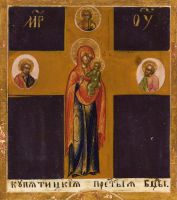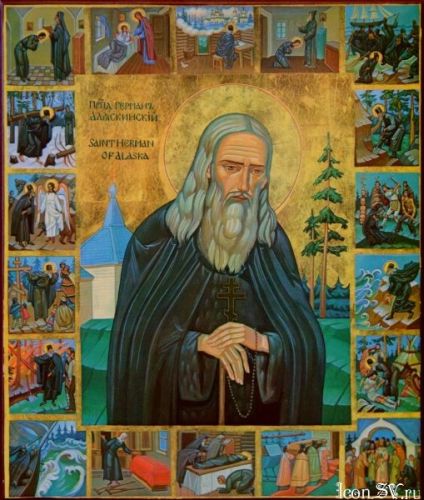
Saints martyrs EUPSYCHIOS, NEARQUE et KARTERIOS.
Saints SECUNDUS (SECOND), FIDENTIEN et VARICUS, martyrs en Afrique.

Saint DEMETRE, martyr en Thrace sous Maximien (entre 286 et 305).
Saints SECUNDUS (SECOND), FIDENTIEN et VARICUS, martyrs en Afrique.

Saint DEMETRE, martyr en Thrace sous Maximien (entre 286 et 305).
Saint FELIX, premier évêque de Nole en Campanie, martyr sous Dioclétien (vers 287).
http://www.santiebeati.it/dettaglio/90268

Saints
GOURIAS
et SAMONAS, prêtres d'Edesse en Osrohène (aujourd'hui Urfa en Turquie),
martyrs sous Dioclétien (289). (Office à saints Gourias, Samonas et
Habib traduit en français par le père Denis Guillaume au tome XI des
Ménées.)
http://oca.org/saints/lives/2013/11/15/103304-martyr-and-confessor-gurias-of-edessa
Santi Giuria e Samona Martiri
|
Martirologio Romano: A Edessa nell’antica Siria, santi martiri Guria, asceta, e Samona, che, sotto l’imperatore Diocleziano, dopo lunghi e crudeli supplizi, furono condannati a morte dal prefetto Misiano e decapitati con la spada. |

Troparion — Tone 5
Christ our God, You have granted us the miracles of Your holy martyrs / Gurias, Samonas and Abibas, / as a stronghold and protection. / Through their prayers, strengthen those in authority in every good deed, / for You alone are merciful and the Lover of mankind!Kontakion — Tone 2
Podoben: “Seeking the highest...” / You received grace from on high, all-praised martyrs, / and you intercede for those in the midst of temptations! / Therefore, holy ones, you freed a young woman from bitter death. / You are indeed the glory of Edessa and the joy of the world!Saint HABIB, diacre d'Edesse, martyr sous Licinius (322).
Saint KYNTIEN, évêque de Séleucie, un des Pères du Ier Concile oecuménique (après 325).
Saints ELPIDIOS, sénateur, MARCEL et EUSTOCHIOS, martyrs morts par le feu sous Julien l'Apostat (361).
Saint CARNE, martyr vénéré au pays de Dinan en Bretagne.
Saint LUPERE (LUPERUS), évêque de Vérone en Vénétie (VIème ou VIIIème siècle). Saints JUSTINIEN, empereur des Romains (527-565), et THEODORA son épouse (+ 548). (Autres mémoires le 2 août et le 14 novembre.)
Saint DYFRIG, évêque dans le pays de Galles (vers 550).
Saint PAVIN (PADUINUS), abbé de Baugé dans le Maine (vers 580).
Saint MACHUDD (MACHELL), fondateur du monastère de Llanfechell sur l'île d'Anglesey au pays de Galles (VIIème siècle).
Saint MALO (MACLOU, MACHUDD), Gallois de nation, évêque d'Aleth (siège transféré à Saint-Malo au XIIème siècle) en Bretagne, mort en exil en Saintonge (vers 640). On l'invoque contre l'hydropisie.
Saint DIDIER, évêque de Cahors en Quercy (vers 655).
http://www.santiebeati.it/dettaglio/77770
San Desiderio di Cahors Vescovo
|
Saint THOMAS II le Nouveau, patriarche oecuménique de Constantinople de 665 à 668 (668).
Sainte CERONNE (DZIRONA), abbesse à Sainte-Céronne près de Mortagne-au- Perche en Normandie (vers 730).
Saint CESSATEUR (CESSATOR, COSSADRE, SADRE), évêque de Limoges en Limousin (vers 732).
Saint FINDAN (FINTAN), natif du Leinster en Irlande, emmené en esclavage dans les Orcades par les Vikings, réfugié en Ecosse, puis moine à Farfa en Italie et ermite près de Rheinau sur le lac de Constance ou Bodensee (879).

L'icône de la Mère de Dieu de Koupiatitch (Biélorussie 1182).
http://www.johnsanidopoulos.com/2011/11/icon-of-theotokos-of-kupyatitich-on.html

HYMN
OF PRAISE: To the Most-holy Theotokos
By St. Nikolai Velimirovich
O
Most-holy Mother of God, Bride of God,
Thou
wast the Bodily Throne of Christ God,
Thou
didst bear the King of Glory in thy body,
Thou
gavest birth to Him Who gavest life to a dead world.
By His
Blood, His holy Blood, He redeemed the world,
Gloriously
glorifying Himself and thee, O Virgin.
But
thy true glory shines in heaven,
Where
thou sittest on the right hand of Christ Himself.
And
the rays of thy glory descend to earth,
And
shine at night on the path of the sojourners.
Glory
to thee, Mother of God, throughout the ages,
The
first Temple, the wonderful Temple of the glory of Christ!
Saint PHILIPPE, higoumène du monastère de Rabang au territoire de Vologda (Russie 1457).


Saint PAÏSSIUS VELITCHKOVSKY, moine de Neamt en Haute-Moldavie, auteur de la version slavonne de la Philocalie et maître hésychaste (Roumanie 1794). (Office traduit en français par le père Denis Guillaume au tome XI du Supplément aux Ménées.)
Venerable
Paisius Velichkovsky Il nostro padre venerable Paisius Velichkovsky ha
condotto la rinascita del monacchesimo ortodosso verso la fine del
diciottesimo secolo,. Il suo sforzo è stato concentrato sul pieno
recupero della tradizione esicasta
http://oca.org/saints/lives/2013/11/15/103311-venerable-paisius-velichkovsky
http://www.johnsanidopoulos.com/2015/11/saint-paisius-velichkovsky-great.html
Troparion — Tone 2
Having become a stranger on earth, / you reached the heavenly homeland, venerable Father Paisius. / You taught the faithful to lift up their minds to God, / crying out to Him with all their hearts: / “Lord Jesus Christ, Son of God, have mercy on me a sinner!”
Kontakion — Tone 8
Like a much-laboring bee, you were an elect zealot of the monastic life, / supplying our souls with the writings of the Fathers through which you guide us on the path of salvation. / Therefore we cry out to you: “Rejoice, truly-wise Paisius, / for through you the tradition of spiritual elders has been restored to us!”
Dormition de saint Germain de l'Alaska (mémoire principale le 12 décembre).
Saints NICOLAS et PIERRE, prêtres, et GREGOIRE et NICETAS, diacres, martyrs par la main des Communistes (Russie 1937).
santi
martiri Guria, asceta, e Samona, che sotto imperatore Diocleziano furono condannati a morte dopo aver
subito numerose e crudeli torture dal prefetto Misiano e vennero
decapitati presso Emessa in Siria. L’iconografia li raffigura
insieme al santo diacono e martire Abibo di Emessa,
Guria, asceta
Nessun commento:
Posta un commento
Nota. Solo i membri di questo blog possono postare un commento.